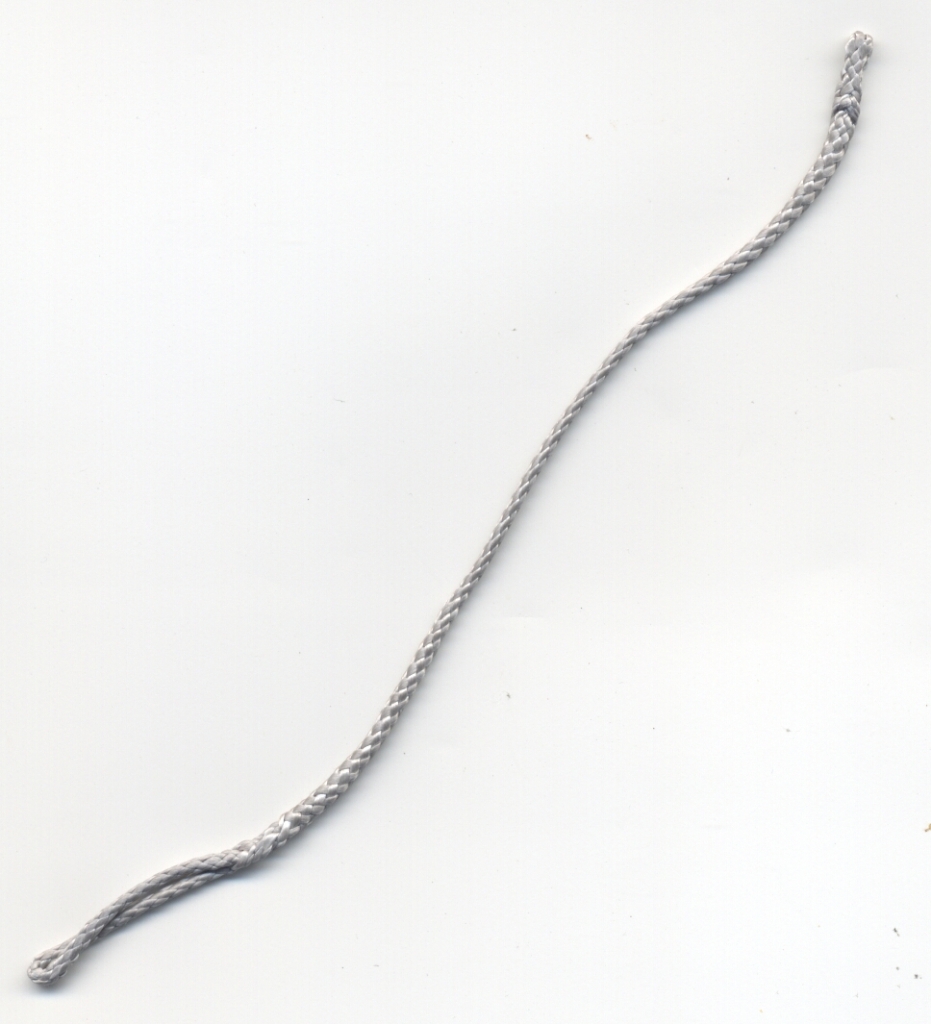Some time back, somebody posted about a friction knot using a single line instead of a loop as is used in the Prussic or Klemheist knots. I do not remember who the poster was and have been unable to find the post. Anyway, I want to thank the poster whoever he or she was. That post introduced me to this knot.
I have been using the single line friction knot for some time now and like it better than the Prussic or the Klemheist or another one I read about recently, the Hedden knot.
This knot uses a single length of line with loops on both ends. I prefer locked Brummel spliced fixed eyes, but a bowline loop could probably be used also. Note that the eye/loop on one end can be made much smaller, just large enough to pass the rope/cord through it.
Start by wrapping the single line around the main line. One way to wrap is to hold the loop on one end and wrap away from the loop:
After about 5 or 6 wraps, bring the end that you are wrapping, back to the loop in the first end and through the loop:
Done.
At this stage it looks a little like the Hedden knot. But there are very important structural differences, not the least of which is the use of a single line instead of a loop or bight.
The difference becomes obvious by simply twisting the knot around the main line until the loop through which the end is passed rotates to the other end of the knot:
Note that I have not untied and retied the knot to get the new configuration, but simply twisted the knot around the main line.
The knot now resembles the Klemheist knot. Again the similarity is only skin deep. There are important structural differences.
For me this new (new to me) knot has one big advantage over any of the three other friction knots mentioned. Mainly: it is simpler and quicker to tie.
There is no dressing stage to tying the knot. Since it is a single line wrapped around another line, the wrapping is the dressing.
When I tie the Prussic, it can take me longer to properly dress the knot so that it works properly, than it takes to tie it. The Klemheist is easier to dress, but it must still be dressed. The Hedden, I have found to be easier to dress even than the Klemheist.
So for me, this knot is simply easier and quicker to use.
In my limited tarp guy line use, I have found the knot to have the advantage of the Prussic in that it is bi-directional. Normally, I use it with the free end back across the knot and through the loop. The force is then pulling the free end in the same direction. I think this is probably the prefered direction for using the knot.
However, I have found that using the knot with the force pulling the free end back over the knot seems to work also. The knot looks a lot messier, but it seems to hold well in my limited experience.
Another, and better looking, way to reverse the holding direction of the knot is to simple twist the knot around the main line. This gives the configuration in the last picture above. Now loading the free end in the direction away from the knot works very well and looks a lot cleaner.
The second method is the method I usually use when I need to reverse the direction of the force on the knot. It only takes a few seconds to twist the knot and it's done.
I usually use 5 or 6 wraps when tying the knot using 1.75 mm Lash-It on 1.75 mm Lash-it. It holds very well and usually better than a 3 wrap Prussic. Both have 6 wraps of cord around the main line, but the single line friction knot here holds better for me.
Increase or decrease the number of wraps to increase or decrease the holding power.
For use on a tarp, this friction knot has become my current favorite. Like the Prussic or Klemheist, I can leave the knot on the guy line and simply slide to the position I need it. I do not have to tie, untie and retie on set-up and take-down.











 Reply With Quote
Reply With Quote

Bookmarks